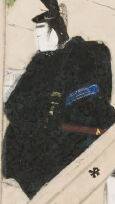Machine Generated Data
Tags
Color Analysis
Face analysis
Amazon

AWS Rekognition
| Age | 20-38 |
| Gender | Female, 52.6% |
| Happy | 45.4% |
| Angry | 45.4% |
| Confused | 47.9% |
| Disgusted | 45.4% |
| Sad | 45.5% |
| Surprised | 46.7% |
| Calm | 48.6% |

AWS Rekognition
| Age | 20-38 |
| Gender | Female, 52.4% |
| Disgusted | 45.8% |
| Sad | 52.9% |
| Surprised | 45.1% |
| Happy | 45.2% |
| Angry | 45.2% |
| Calm | 45.2% |
| Confused | 45.6% |
Feature analysis
Categories
Imagga
| food drinks | 85.5% | |
| streetview architecture | 6.6% | |
| beaches seaside | 4% | |
| nature landscape | 1.2% | |
| macro flowers | 1.1% | |
| paintings art | 0.7% | |
| interior objects | 0.3% | |
| events parties | 0.3% | |
| pets animals | 0.2% | |
| people portraits | 0.1% | |
Captions
Microsoft
created on 2023-10-30
| a cake sitting on top of a table | 30.5% | |
| a person sitting at a table with a cake | 29.5% | |
Azure OpenAI
Created on 2024-01-24
This is a traditional Japanese illustration showing multiple scenes set in what appears to be a palace or a house of nobility. The image displays a bird's eye view into different rooms of the complex. In the top left room, we see a person sitting upright with their back to the viewer, surrounded by four folding screens decorated with patterns. The interior of the room suggests a setting for rest or privacy. Moving right, there is a person in a yellow robe and another figure in blue sitting on the floor, possibly engaged in a conversation and activity outside the viewer's context. Below, in a large space which seems to be a central communal area, numerous individuals, presumably men due to their black robes and hairstyles, are seated formally in rows. Their attire, the stiffness of their posture, and the orderly arrangement suggest that they could be nobles or officials in a court setting. Their detailed attire and accessories indicate a high social standing, and their focus towards the front suggest they might be attending to a lecture, ceremony, or some protocol. Each figure is separated by what seems like low wooden barriers or railings signifying rank or position, a common element in feudal Japanese court design. The room on the bottom left features another person, possibly of higher rank due to the seating on an elevated platform, engaging with scrolls or papers, accompanied by two attendants sitting lower down. Throughout the image, we see that the artist has paid great attention to depicting the architectural details like the woodwork and tatami mats. The use of blank (unpainted) space and perspective places focus on the individuals and their respective activities. Cloud-like gold motifs embellish the background, suggesting either a decorative element in the painting or symbolic representation of their elevated status and environment. This Japanese illustration is rich in cultural detail and encapsulates a moment in history, offering a glimpse into the life and proceedings of Japanese nobility.
Anthropic Claude
Created on 2024-03-29
The image appears to depict a traditional Japanese landscape scene. It shows a group of figures, likely representing people, dressed in traditional Japanese attire and seated in a contemplative or meditative pose. The figures are arranged on a raised platform or structure, surrounded by lush vegetation and what appears to be a waterfall or stream in the background. The overall composition and style of the artwork suggest it is a representation of a tranquil, serene environment, perhaps a temple or sacred space. The use of vibrant colors, intricate patterns, and delicate brushwork creates a visually striking and aesthetically pleasing depiction of this traditional Japanese scene.
Meta Llama
Created on 2024-11-23
The image depicts a traditional Japanese scene, likely from the Edo period (1603-1868), featuring a group of people in traditional attire gathered around a staircase. The individuals are dressed in black kimonos with blue accents, while one person stands out wearing a green kimono. The scene is set against a backdrop of a wooden staircase with green accents and a beige floor, surrounded by yellow clouds or smoke at the top and bottom of the image. In the background, there are various objects and characters, including a green cloth draped over a chair, a person sitting on the floor, and a small dog. The overall atmosphere of the image suggests a formal gathering or ceremony, possibly related to a traditional Japanese event or ritual. The image's style and composition are reminiscent of traditional Japanese art, with bold lines, vibrant colors, and intricate details. The use of gold accents and the depiction of traditional clothing and architecture further emphasize the image's cultural significance. Overall, the image presents a captivating and culturally rich scene that invites the viewer to explore the traditions and customs of Japan's past.












